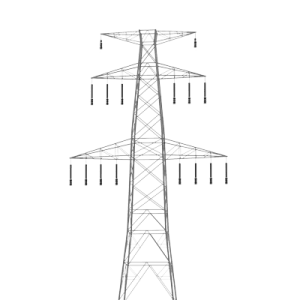Thermal energy at home
Watch a slideshow and play a matching game about thermal energy at home.

Overview
Students watch a slideshow and learn about ways they use thermal energy at home. They play a matching game to reinforce learning and brainstorm ways to use less energy.
Instructions
What you'll need
- “Thermal energy at home” slideshow
- "Thermal energy at home" game cards, one for each pair or groups of 3
- Digital projector and screen
Thermal energy at home
- Ask students to think about ways they use thermal energy, or heat, at home and share with a partner. Write some ideas on the board.
- Show students the “Thermal energy at home” slideshow to review many of the ways we use thermal energy at home.
- Slide 2: the Sun is sometimes used to warm our houses when it streams through the windows.
- Slides 3 to 6: thermal energy is in the hot water found when washing your hands, having a shower or bath, and sometimes in washing machines and dishwashers.
- Slides 7 to 10: thermal energy is used for cooking food (stove), heating our homes (furnace, heat pump and baseboard heaters), drying our clothes or warming up rooms (fireplace).
Thermal energy at home game
- Have students play a matching game using the "Thermal energy at home" game cards.
- Each pair or small group of three will need a set of game cards.
- Print two copies of the "Thermal energy at home" game cards, which includes 12 designs on each sheet. You should end up with a pair of each design.
- In their pairs or small groups, students turn all 24 cards face down on the table in front of them and take turns turning two cards over, looking for a matching pair. When they find a pair, they take the two cards and turn two more over. If they don’t find a pair, they turn their cards face down again and the next student takes a turn. Play until all pairs are found.
- Alternatively, they could play a version of Go Fish with the cards.
- Now that students know how they use thermal energy at home, have them share ideas with their partner or small group of ways they can save energy to help care for the environment.
- On a slip of paper or sticky note, have them write down one thing they can do to save energy and post them in the classroom.
Modify or extend this activity
Show students the “Thermal energy at home” slideshow again and discuss whether the devices show examples of convection, conduction or radiation.
Curriculum Fit
Grade 3 Science
Big idea
- Thermal energy can be produced and transferred.
Content
- Sources of thermal energy
Curricular competencies
Questioning and predicting
- Demonstrate curiosity about the natural world
- Observe objects and events in familiar contexts
Evaluating
- Identify some simple environmental implications of their and others’ actions
Applying and innovating
- Transfer and apply learning to new situations
Assessments
- Assess students’ understanding of thermal energy and ability to generate ideas at the beginning and end of the activity.
- Assess students’ ability to communicate and work together playing the “Thermal energy at home” game.
Teaching Notes
Sources of thermal energy at home
The Sun, chemical reactions and friction are all sources of thermal energy at home.
- The Sun is a great source of energy that warms Earth enough for plants and animals to live, and can also be used for warming your house or electricity.
- Chemical reactions can generate thermal energy. You can burn wood in a wood stove to warm a room. Burning natural gas creates thermal energy and is used at home to heat water for showers/baths and wash dishes, clothes and hands. It is also used in a natural gas stove to cook food or in a furnace to warm your home. Natural gas can also be burned in a natural gas fireplace to heat a room.
- Friction can generate heat as well. At home, electricity is used in many ways for heat. When electricity is passed through a heating element or metal conductor, some of the electrical energy is converted to heat energy from the resistance of the electrons travelling through the metal. This can be used to heat water for showers/baths and wash dishes, clothes and hands. In an electrical stove, it’s also used for cooking food. The clothes dryer uses electricity to generate heat and dry our clothes. Electricity is also used for baseboard heaters to heat some homes as well.
Energy conservation
Energy conservation is about using less energy. Once students recognize how they are using thermal energy at home, they can come up with ways to use less energy such as taking shorter showers or having smaller baths, hanging clothes to dry, using cold water to wash clothes or putting on a sweater instead of turning up the heat. Every little action they can do will make a difference and help care for the environment.
Tips for saving energy
- Turn off lights when you leave the room.
- Decide what you want before you open the fridge door.
- Use natural light.
- Unplug electronics when they aren’t being used.
- Wash clothes only when they’re dirty.
- Only run the dishwasher when it’s full.
- Read, play a board game or go outside instead of using electronics.
- Put on a sweater instead of turning up the heat.
- Turn down the heat at night.
- Keep windows and doors closed if the heat is on.
- Turn off the tap when brushing your teeth.
- Take shorter showers.
- Walk or bike instead of driving short distances.







